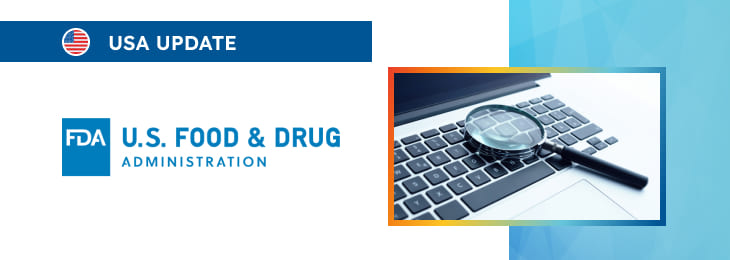The new article clarifies the regulatory approach to be applied with respect to tailored responsive communication.

Table of content
The Food and Drug Administration (FDA or the Agency), the US regulating authority in the sphere of healthcare products, had published a guidance document dedicated to addressing misinformation about medical devices and prescription drugs allowed to be marketed and used in the country. Structured as a questions-and-answers document, the guidance highlights the key points related to the applicable regulatory requirements and also provides additional clarifications and recommendations to be taken into consideration by medical device manufacturers and other parties involved in order to ensure compliance.
At the same time, provisions of the guidance are non-binding in their legal nature, nor are they intended to introduce new rules or impose new obligations. Moreover, the authority explicitly states that an alternative approach could be applied, provided such an approach is in line with the existing legal framework and has been agreed with the authority in advance.
Introduction
The enforcement policy outlined in the present guidance document addresses how firms may voluntarily engage in tailored responsive communications to counteract misinformation regarding their approved or cleared medical products. This guidance is particularly relevant when dealing with misinformation disseminated through internet-based platforms by independent third parties.
The policy provides firms with a framework to address false or misleading information effectively, while still ensuring compliance with the regulatory requirements that ensure truthfulness, non-misleading content, and consistency with FDA-approved labeling. The guidance is intended to expand the options available for firms to correct misinformation while ensuring public safety and trust.

Scope of Enforcement Policy
The enforcement policy described in the guidance applies to specific circumstances in which a firm chooses to address misinformation about its approved or cleared medical products. This misinformation must be disseminated by an independent third party via the internet, and it can pertain to the medical product itself, or to a broader class of products that includes the firm’s product.
It is important to mention that this policy is not limited to instances where the misinformation explicitly names the product; it can also apply to misinformation about a broader category that indirectly includes the product. Furthermore, there are important limitations to this enforcement policy.
For instance, the policy does not apply to television or radio advertisements, even if they are streamed online. Additionally, the policy is limited to responses to misinformation regarding unapproved uses of a product and does not cover responses to value statements, opinions, or personal experiences related to the product.
Firms are still free to use general medical product communications to address such statements, but these do not fall under the enforcement policy for tailored responsive communications.
Examples of Non-Covered Communications
The guidance provides several examples to illustrate the types of communications that are not covered by the enforcement policy. For example, if an influencer shares a personal experience about a drug not working for them, or if a celebrity discusses a family member’s negative experience with a drug, these are considered personal opinions and do not fall under the enforcement policy.
Similarly, if an individual discusses switching products for their pets based on personal preferences or perceived effectiveness, these statements are also not covered by the policy. However, if such personal statements include factual inaccuracies that meet the definition of misinformation, the firm may choose to address these inaccuracies under the enforcement policy.
Examples of Covered Communications
The guidance outlines specific scenarios where a firm’s tailored responsive communication would fall within the enforcement policy. For instance, if a healthcare professional (HCP) posts misinformation about a drug class causing a disease without scientific backing, or if a celebrity inaccurately describes the use of a drug, these statements would be considered misinformation.
In these cases, the firm can address the inaccuracies through tailored responsive communication. The firm’s response must be truthful, scientifically sound, directly relevant to the misinformation, and limited to the information necessary to correct the false statements.
Requirements for Tailored Responsive Communications
When creating a tailored responsive communication, the firm must clearly identify both the specific misinformation and the specific internet-based, independent third-party communication in which the misinformation appeared. This identification could be achieved by embedding a portion of the original communication within the response or by citing specific details such as the date and location of the misinformation.
The information provided in the tailored responsive communication must be truthful, accurate, and scientifically sound. This means that any studies or analyses referenced must meet generally accepted scientific standards, including clear descriptions of hypotheses, acknowledgment of potential biases, and statistical validity.
The response should directly address the misinformation without omitting material information necessary for context.
Additional Disclosures and Considerations
The guidance recommends that firms include certain disclosures in their tailored responsive communications to ensure that the audience has appropriate context. These disclosures should include a mechanism for obtaining the current FDA-required labeling, the date of the communication, and a statement identifying the firm or the person providing the information on behalf of the firm.
If the response addresses misinformation suggesting unapproved uses of a product, the firm should clearly state that the unapproved use has not been approved by the FDA and that the safety and effectiveness of the product for that use have not been established. The presentation of these disclosures should be clear and prominent, considering factors like font size, layout, and the platform’s specific design features.
If the communication includes both audio and visual components, the disclosures should be presented in both formats simultaneously.
Use of Different Internet-Based Settings
The enforcement policy is not restricted to the internet-based setting where the misinformation initially appeared. Firms can share their tailored responsive communication across multiple platforms, provided that they clearly identify the misinformation and its original source.
This flexibility allows firms to reach broader audiences and ensure that the misinformation is adequately addressed across different settings.
Operational and Presentational Considerations
When addressing misinformation, firms are advised to prioritize misinformation that is currently relevant or actively spreading, especially if it is being disseminated by influential third parties with large followings. Firms should also consider how their tailored responsive communication will be displayed across different platforms, particularly when enabling sharing features.
The format and layout of the communication should ensure that the response and any necessary disclosures are not obscured by platform controls or other content.
Conclusion
In summary, the enforcement policy outlined in this guidance provides firms with a structured approach to addressing misinformation about their medical products on internet-based platforms. The policy expands the tools available to firms for communicating with the public, helping to ensure that accurate information about medical products is readily accessible.
How Can RegDesk Help?
RegDesk is an AI-powered Regulatory Information Management System that provides medical device companies with regulatory intelligence for over 120 markets worldwide. It can help you prepare and publish global applications, manage standards, run change assessments, and obtain real-time alerts on regulatory changes through a centralized platform. Global expansion has never been this simple.

